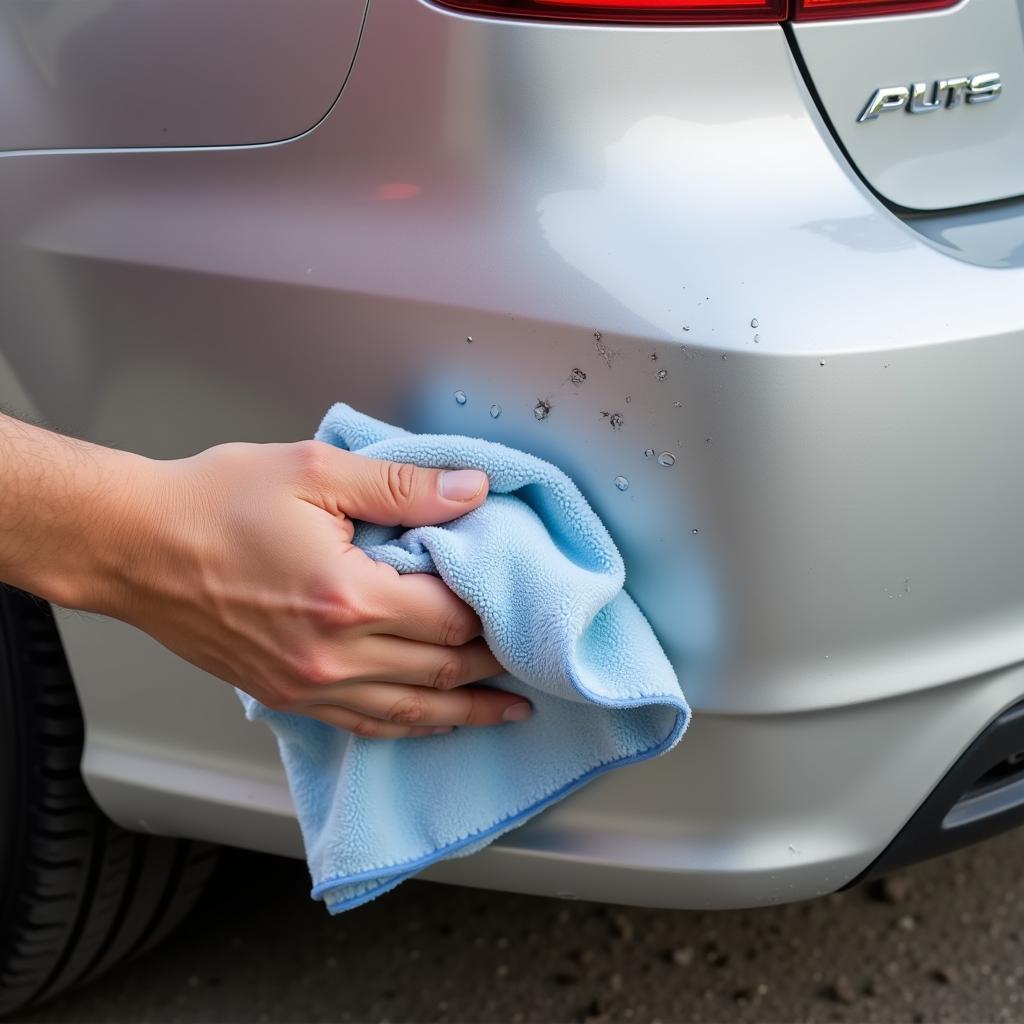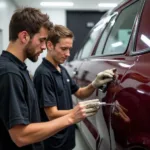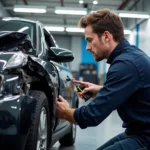Scuffed bumpers are an unfortunate reality for many car owners. Whether it’s a minor scrape from a parking lot mishap or a more noticeable scuff from a light impact, these blemishes can detract from your car’s appearance. Fortunately, repairing a scuffed car bumper is often a manageable DIY project, saving you the expense of a professional repair. This comprehensive guide will walk you through the steps on how to repair scuffed car bumper, from assessing the damage to achieving a professional-looking finish.
Repairing a scuffed car bumper yourself can be a rewarding experience, saving you money and restoring your car’s appearance. Before you begin, it’s important to assess the extent of the damage. Light scuffs and scratches can usually be addressed with simple cleaning and polishing techniques, while deeper scuffs might require filling and repainting. Understanding the different types of bumper damage will help you choose the right repair method. For minor scuffs and scratches, a car bumper scuff repair kit can be a cost-effective solution.
Assessing the Damage
First, thoroughly clean the scuffed area with soap and water to remove any dirt or debris. This will give you a clear view of the damage and help determine the best course of action. Is it a light surface scuff, a deep scratch, or a crack? Knowing the type and depth of the damage is crucial for choosing the right repair materials and techniques.
Gathering Your Supplies
Once you’ve assessed the damage, gather the necessary supplies. This may include cleaning agents, sandpaper of various grits, plastic filler or primer, touch-up paint, clear coat, polishing compound, and applicators. A complete car bumper scuff and scratch repair kit will often contain most of these items.
Repairing Light Scuffs
For light scuffs, you can often restore the bumper’s finish with a polishing compound. Apply a small amount of compound to a clean microfiber cloth and rub it onto the scuffed area using circular motions. This can effectively remove minor imperfections and restore the bumper’s shine. For more stubborn scuffs, you may need to use fine-grit sandpaper before polishing.
Repairing Deeper Scuffs and Scratches
Deeper scuffs and scratches require more extensive repair. After cleaning the area, sand the damaged area with progressively finer grits of sandpaper until the surface is smooth. Then, apply a thin layer of plastic filler or primer to fill in the scratch. Once the filler dries, sand it smooth and level with the surrounding area. If you’re looking to do the repair yourself, check out our guide on car bumper scuff repair at home.
Painting and Finishing
If the scuff has penetrated the paint, you’ll need to apply touch-up paint. Ensure the paint matches your car’s color. Apply thin coats, allowing each coat to dry completely before applying the next. Once the paint is dry, apply a clear coat to protect the repair and blend it with the surrounding finish. For information on repairing various scuffs and scratches on plastic bumpers, refer to our guide on repair scratched plastic car bumper.
What causes bumper scuffs?
Bumper scuffs are most commonly caused by minor impacts, such as parking lot bumps, scraping against low curbs, or light collisions with other vehicles.
How much does it cost to repair a scuffed bumper professionally?
The cost of professional repair can vary depending on the severity of the damage, but it typically ranges from $100 to $500 or more. You can find more ways to repair car bumper scuffs in our dedicated guide: how to repair car bumper scuffs.
Conclusion
Knowing how to repair scuffed car bumper can save you money and maintain your vehicle’s appearance. By following these steps, you can effectively address minor bumper damage and restore your car’s finish. Remember to assess the damage carefully and choose the appropriate repair method for the best results.
FAQ
- Can I repair a cracked bumper myself? Cracks often require professional repair.
- What type of sandpaper should I use? Start with coarser grits and gradually move to finer grits.
- Do I need to use primer? Primer is recommended for deeper scratches.
- How long does the repair take? The drying time for fillers and paints can vary.
- Where can I find matching touch-up paint? Auto parts stores often carry touch-up paint.
- How can I prevent bumper scuffs? Careful parking and maneuvering can help prevent scuffs.
- What should I do if the scuff is very deep? Consider professional repair for deep scuffs.
For further assistance, please contact us via WhatsApp: +1(641)206-8880, or Email: [email protected]. Our customer service team is available 24/7.



